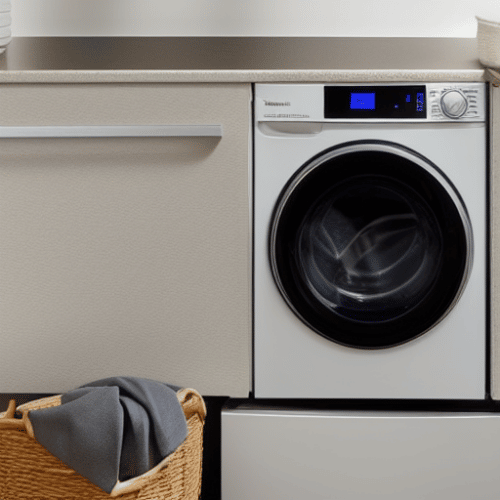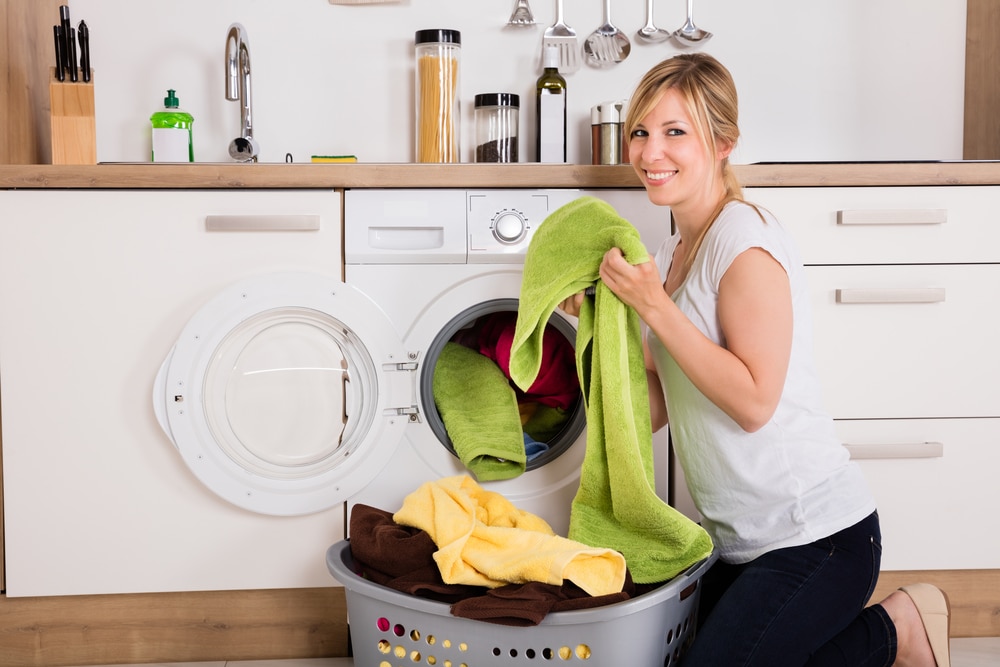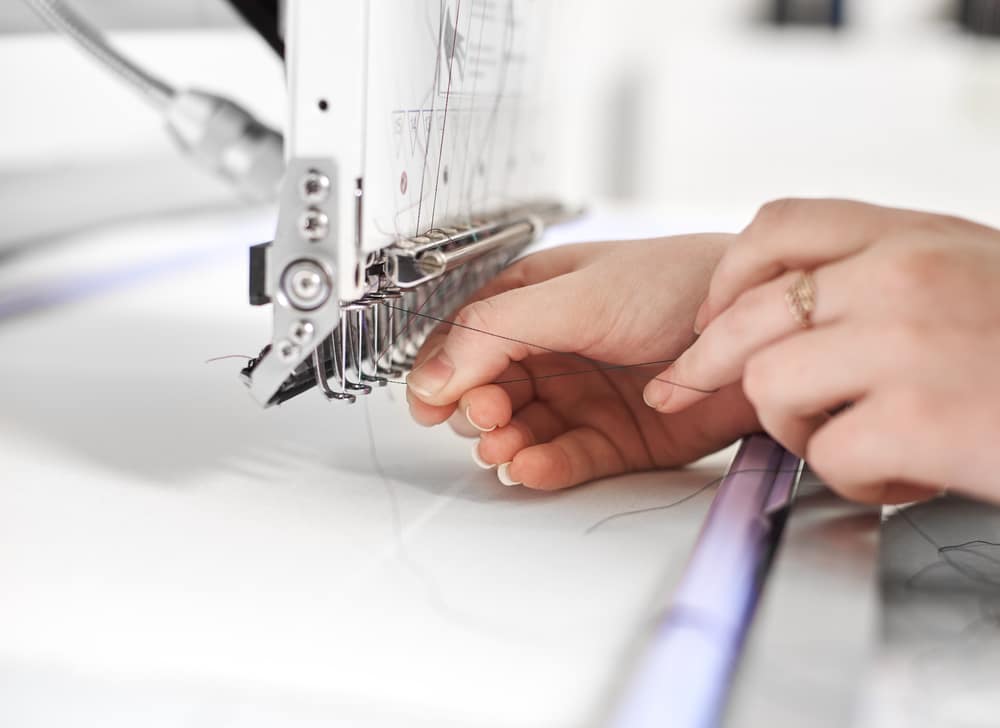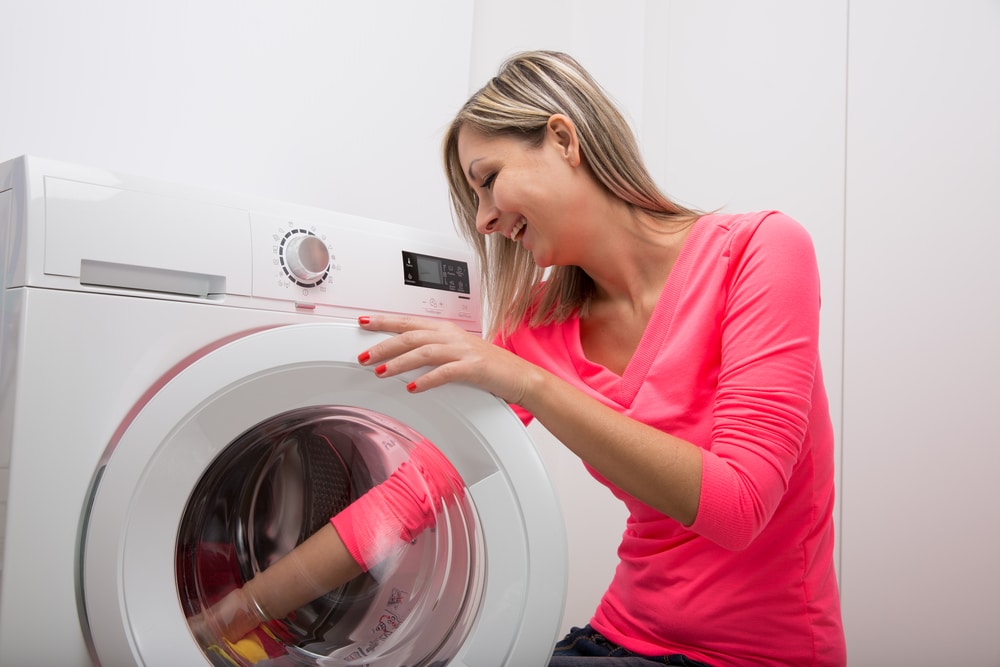Last Updated on
Have you ever wondered how to install an integrated washer dryer in your kitchen?
It might be challenging to figure out how to install this machine since you need to ensure that the fit is ideal so that you can still reach cabinets, the dishwasher, and other kitchen appliances and tools. If you don’t have access to the right skills, or tools, don’t ruin your laundry by trying the installation alone. You can get a laundry installation professional to set things up for you.
If you do have access to plenty of skills and patience, you’re in the right place.
This post will explore some of the steps involved in installing this piece of laundry equipment. If you’re not confident with plumbing or implementing electrical appliances in your kitchen, you may need to look into a professional service.
Preparing for the Installation
The first step in installing an integrated washing machine and dryer is making sure you have the right product. Measure the appliance carefully and the space where you want the machine to be installed.
Make sure there is space in your kitchen for the opening and that the cabinet goes all the way to the ground. This way, your machine has something sturdy to stand on.

There needs to be plenty of space within the unit so that you can avoid the rocking or movement of a spin cycle harming things in your kitchen. Installing one of these appliances before adding additional cabinetry work in your kitchen can reduce the stress and cost of this process.
Notably, an integrated washing machine is one of the more popular appliances among homes with smaller washing and laundry needs. These are entirely hidden behind existing or new cabinets and doors in your kitchen, so you can’t see them working. This means that you need to ensure your equipment has a full-fitting plinth and door to cover them.
Installing Your Appliance
Most appliances will come with access to tutorials and manuals. If you can’t find this information with your device, check what the company might post on its website. There should be some information available online. If you can’t find instructions on the website, you might want to reach out to a specialist service to avoid doing damage to your water or electrical system.
Make sure you read all of the instructions carefully to know where everything needs to be attached to your home. Ideally, you’ll need to place the product within the cabinet before applying the bottom plinth for the cabinet. Most integrated washing machines will have a front opening door, so the top of the unit can go all the way up to the bottom of the unit, keeping everything level.
The front door of your washing machine may be attached to the cabinet door in such a way that you would simply open the cabinet door to access and remove old laundry loads and add new ones. If this is the case for your machine, please check the instructions for a template of how to mount the machine’s door properly onto the door of your cabinet.
After ensuring your washing machine fits in the right place within your home, turn all of the water off before accessing the plumbing part of your washer dryer installation. An integrated washing machine installation, just like when you’re installing a freestanding washing machine, will require you to connect the back of the machine to the plumbing in your home.
Installing Pipes and Electricity
Depending on the kind of integrated washing machine you get, you might be able to simply feed the plug through the top of a cabinet to an outlet. Alternatively, if there’s an outlet installed at the back of the new machine, you can keep the device plugged in at all times. Do not plug your washing machine in until you’re done installing the device.
To plumb your new integrated washing and dryer machine, you’ll have to connect the water hose at the back of your device to the supply tap, using the hose that comes with your appliance. Some models might include hot and cold-water connections. If this is the case, attach the red tube to the hot tap and the grey tube to the cold-water tap.
Remember, you will also have to get the waste pipe connected to the waste pipe for your sink or another outlet in your home. This will allow the washing machine to drain the wastewater out of your device when it’s done cleaning. Make sure you take the time to look around your washing machine and ensure that everything is connected correctly.
Failing to connect the pipes and valves correctly could cause flooding within the units of your kitchen. Repairing this to the latest standards will often cost you extra, or even more than if you were to get your device fully installed by professionals in the first place.
Ensure all pipe connections are tight, following the instructions within your manual. You can also search on the web for extra guidance about how to connect water pipes. The instructions are usually the same for any freestanding or integrated laundry machines, so you shouldn’t have to search for long.
Testing your Installation

The installation of integrated washing machines or laundry dryers isn’t a quick job. It takes a while to find the right washing machine, get your device lined up correctly, and complete the installation.
However, it would be best if you didn’t rush through the process. Sometimes, rushing a washing machine installation could mean that you can’t reach the machines to get to your laundry. You also run the risk of leaking washing machines or water getting access to your other cabinets.
Once you have all the pipes for your washing machines and dryer devices fitted, you can complete the installation by moving the device to where you want it to be. Use the feet to raise the machine to the right level for easy access, and plug the machine in. You can access the water system in your home again here to turn it on post-installation. If everything is connected as tight as it should be, you should be able to access your washing machine’s menu.
Use the controls on the washing machines to run through a quick spin cycle. Don’t try putting your laundry in the machine yet. Check everything runs smoothly and that you can try different cycles without causing too much vibration from your machines before you wash any clothes. Please don’t be afraid to look around for help from people in your area if you’re not sure. Professional plumbers and the like can use the latest skills to get your installation done in no time. That way, you’re not putting your property at risk.
If everything works as it should, access your laundry menu again on the machine to set up a proper wash. Just after an installation, give it a quick try. Once you’re comfortable with how everything works post-installation, you can simply use your machine as normal.
Keep Your Home Tidy
Unlike your standard washing machines and standalone dryer appliance, an integrated washer dryer is something you build into the cabinets or units of your kitchen. Where you can easily see other washing machines as soon as you walk into a laundry space or kitchen, learning how to install an integrated washer dryer means they’ll be hidden behind a door or cupboard.
Which do you prefer, a standard machine or an integrated one? Let us know in the comments.
Rebekah is a writer who loves to explore new products and find hacks that make life easier. She has a knack for all things home improvement, health and fitness. So you’ll often find her on Pinterest or browsing Houzz for ideas.
She’s always looking for the next thing to fix up around the house or what gadget might be just right for her lifestyle. Rebekah enjoys exploring new recipes, taking care of her family, and making sure she stays healthy with regular workouts at the gym.



